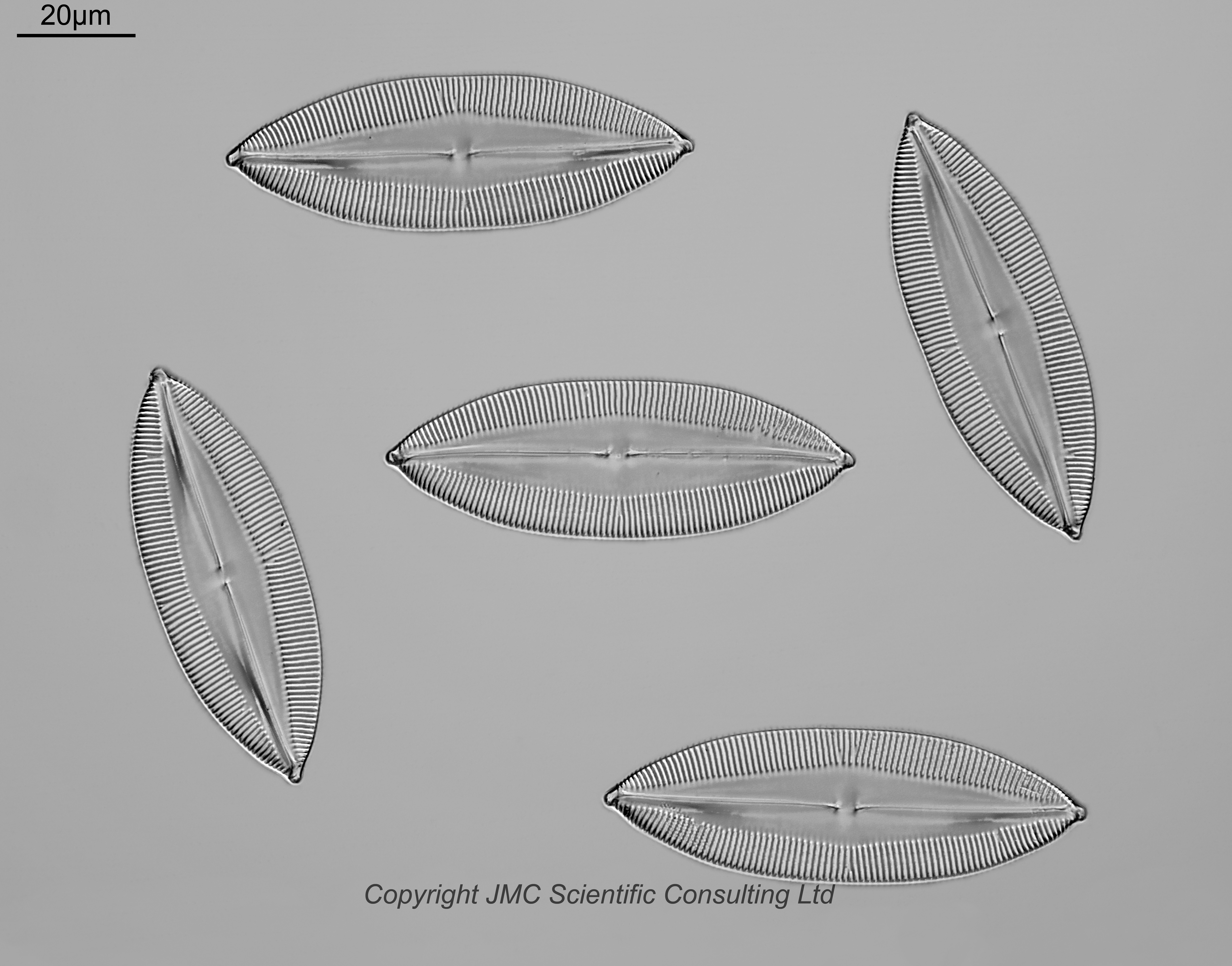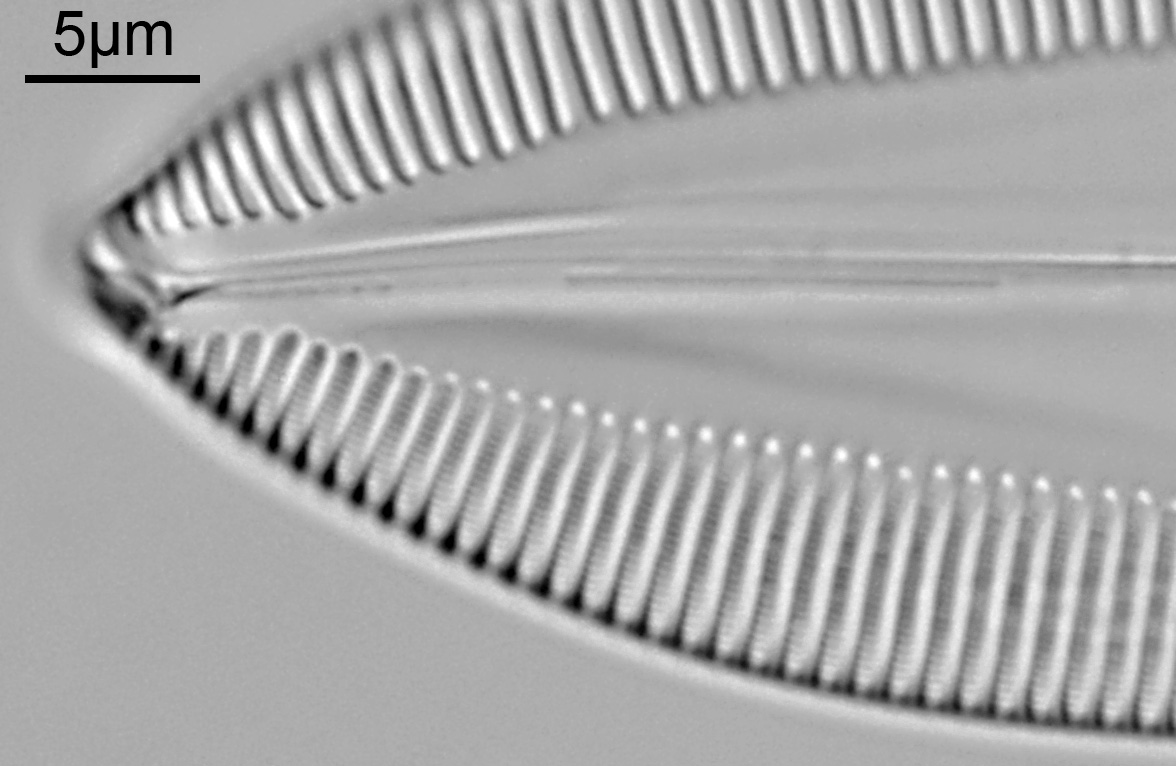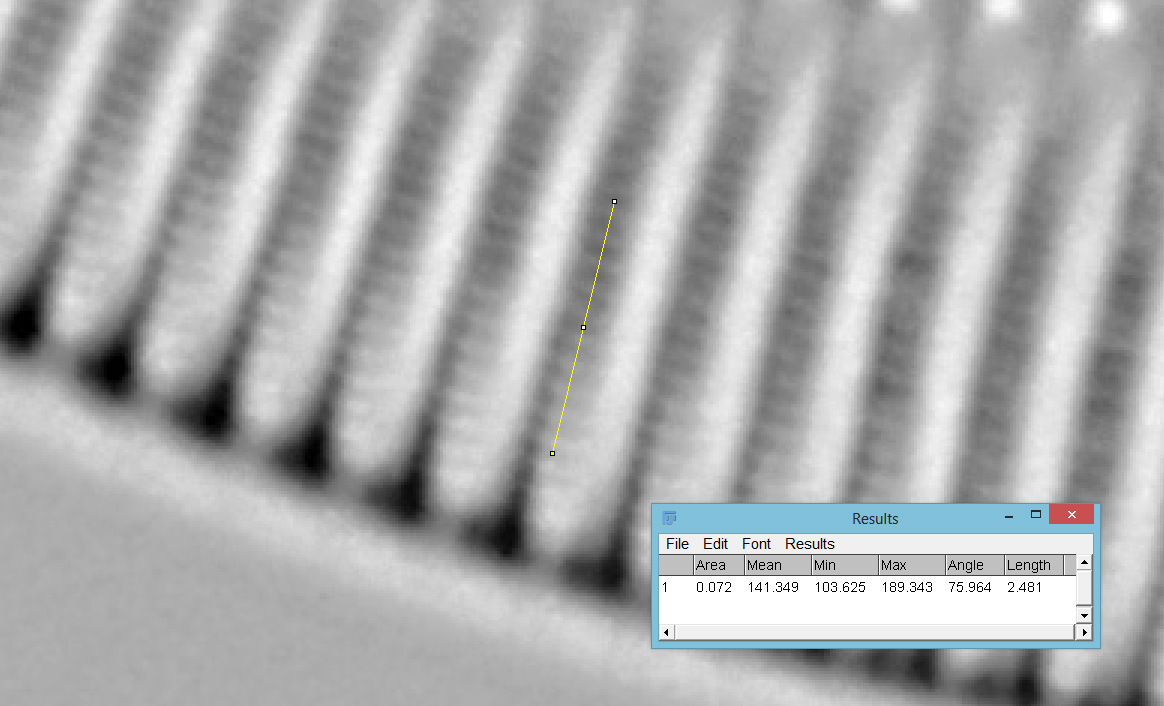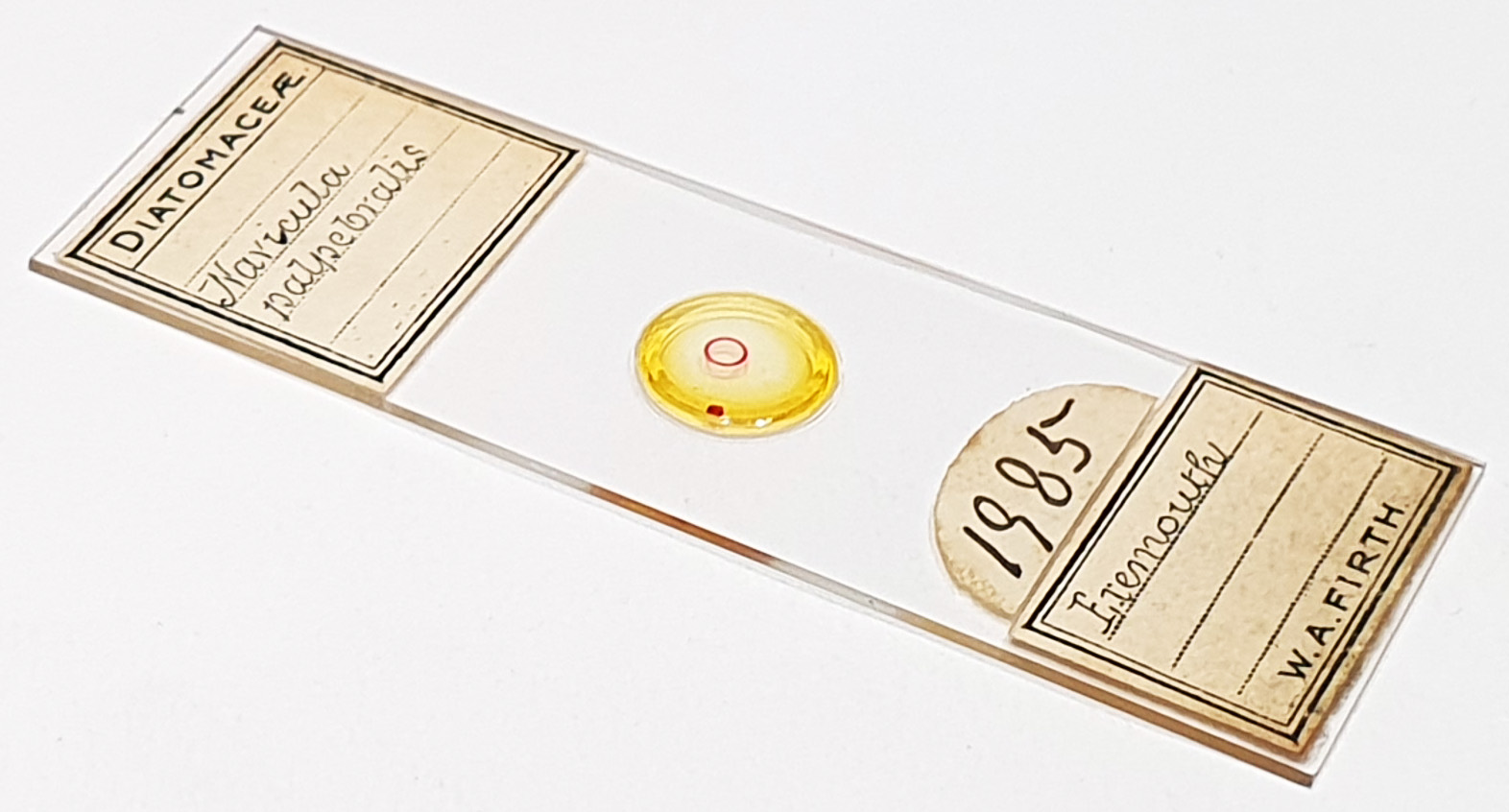



An arrangement of five Navicula palpebralis from Exemouth (Exmouth), UK. Prepared by WA Firth. Olympus BHB microscope using 450nm LED light. 63x Leitz Pl Apo 1.4 objective, oil immersion. Olympus Aplanat Achromat condenser, oil immersion, oblique lighting. 2.5x Nikon CF PL photoeyepiece. Monochrome converted Nikon d850 camera. 52 images stacked in Zerene (Pmax). When looking at these I was wondering why it was so hard to see any details within the striae. Taking one of the frames that went into the stack I cropped and tweaked the contrast in it a bit which made the areolae a bit more visible. Putting this into ImageJ I measured the areolae spacing as only 248nm. This explains why it was hard to see the details. Given the small size, oblique lighting has certainly helped make the areolae become more visible, although as it often the case (and especially with these being relatively low contrast) they have become a bit lost in the stacked image.
Navicula palpebralis Brébisson published in: Smith, W. (1853). A synopsis of the British Diatomaceae; with remarks on their structure, function and distribution; and instructions for collecting and preserving specimens. The plates by Tuffen West. In two volumes. Vol. I. pp. [i]-xxxiii, 1-89, pls I-XXXI. London: John van Voorst, Paternoster Row. Page 50 for the description, and Plate 31, Figure 273 for an image.